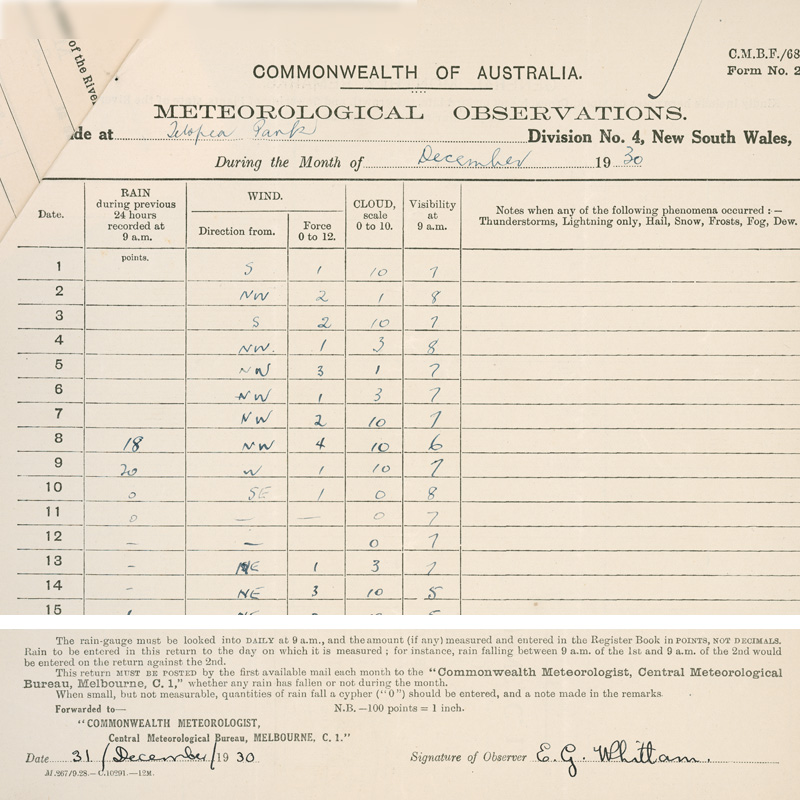Vale Gough Whitlam: PM and Weather Observer
22 October 2014
As the nation mourns the passing of former Prime Minister Edward Gough Whitlam, staff at the Bureau of Meteorology join with Australians everywhere in expressing our condolences to his family and in celebrating his extraordinary contribution to Australian life.
It is a little known fact that as a young boy, aged 14, Gough was for a short while one of the country’s volunteer weather observers.
Earlier this year, staff at the Bureau noticed his signature on records taken at his old Canberra high school, Telopea Park School, while they were researching data held in the National Archives of Australia.
Every day at 9am sharp, Gough would have emptied the rain gauge and recorded the precipitation over the previous 24 hours. His records for December 1930 show that rain fell on eight days that month, with a total of 157 points (approximately 40mm). In January 1931, there were only three rain days totalling 48 points – “almost half an inch”, the locals would have said.

Weather observations recorded by Gough Whitlam. Image courtesy of the National Archives of Australia
Gough also observed the wind direction and strength every day using the Beaufort system, which rates wind strengths on a scale of 1-12 according to observations such as how much the wind is moving the leaves, twigs, branches and trees. The strongest wind he recorded was a westerly at Force 7 (32-38 miles per hour) on the morning of Monday 12 January 1931.
He also recorded the amount of cloud and the visibility each morning, as remains standard practice for the thousands of volunteers who contribute to Australia’s daily weather records.
From the other observations in the bundle, it appears that the science master coordinated different students to take the ‘daily obs’ – and Gough took the recordings in late 1930 right through to the start of the new school year in February 1931. His diligence and commitment not only extended through the weekend, but also throughout the school holidays.
Given his young age, these records probably represent the first of the many services that were formally performed by Edward Gough Whitlam for the Commonwealth of Australia.

Comment. Tell us what you think of this article.
Share. Tell others.